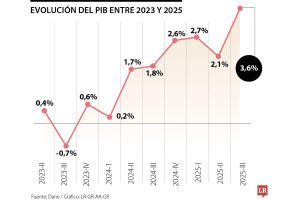Hardly a week has passed this year without the S&P 500 Index marking a new all-time high. It’s not just conviction in an economic “soft landing,” featuring benign inflation and steady growth, that is buoying equity investors. Recently, investors have also indicated growing confidence in a Republican U.S. election sweep—with prediction-market odds of this scenario recently rising to 46%, from 29% in mid-September—that could favor sectors such as financials and tech, as well as bitcoin.
While Morgan Stanley’s Global Investment Committee believes this bullish sentiment could help carry equity markets through year-end, we are increasingly watching cautionary signals from the bond market. Critically, the 10-year Treasury yield has sharply risen by more than 50 basis points over the past month, with its price declining in tandem. A closer look at the 10-year yield and its underlying components sheds light on at least two key areas of concern.
1. Potential for higher rates and lingering inflation
Consider that the nominal 10-year Treasury yield reflects different elements: the inflation-adjusted, or “real,” yield (a proxy for expected economic growth) and the “inflation breakeven rate” (a measure of investors’ future inflation expectations). Both components have helped drive the 10-year nominal yield higher—to around 4.2%—over the past month.
- The real component, for instance, has risen about 35 basis points to more than 1.9%. On one level, this makes sense: Metrics tied to real economic growth have been much better than forecast lately. However, the levels of real rates also matter critically to equity investing, with higher rates typically weighing on valuations and raising the cost of capital. And currently, real rates are near levels associated with stock-market swoons seen during the post-COVID cycle.
- The other component, inflation expectations, has risen about 25 basis points to about 2.3%. By now, many investors may be shrugging off inflation risks, but we don’t share the consensus view that those risks are fading. To the contrary, we think deflationary goods pricing and falling energy prices have flattered broader inflation readings, causing many investors to overlook the lingering pressures of resilient housing prices and wages. There also have been corresponding moves in inflation expectations and election odds, with bond owners signaling that former President Donald Trump’s proposals on tariffs and immigration could be inflationary. Ongoing inflation could become a drag on growth and may compel the Fed to dial back monetary easing, likely putting further upward pressure on rates and weighing on stock valuations.
2. Rising policy uncertainty
Another way to understand the move in the 10-year yield is to analyze the so-called term premium, i.e., the extra yield investors require to hold a long-term bond, instead of a series of shorter-term bonds, due to the uncertainty around future rate changes that might affect its price. By one measure, the previously negative 10-year term premium has risen more than 40 basis points to about 0.20%, one of the highest readings in the post-COVID cycle. This suggests investors may be increasingly concerned about fiscal and monetary policy, as unsustainably high U.S. debt and deficits continue to swell, making the future path of rates more uncertain.
Validating these concerns has been gold’s ascent. The precious metal is viewed as a “safe haven,” typically rising when the U.S. dollar weakens, rates drop and equity prices fall. However, it has recently been defying these patterns, not only outperforming stocks but hitting new record highs. This suggests that while U.S. equity investors remain optimistic, other investors, including major gold buyers like global central banks, may have a more sobering view.
Portfolio Implications
These dynamics suggest the potential for stronger-than-expected economic performance may be fading and that there are increasing risks that are not accounted for in current equity valuations. That makes us want to hedge portfolios, rather than chase betting markets and celebrate outcomes as if they were unilaterally positive.
Investors should consider rebalancing portfolios and pursuing maximum diversification across stocks (in terms of both regions and sectors), bonds (neutralizing major duration skews), real assets and hedge funds. Also consider private illiquid investments, particularly secondaries, infrastructure and real-estate-focused funds.
Información extraída de: https://www.morganstanley.com/ideas/bond-yields-rise-2024-market-signals







